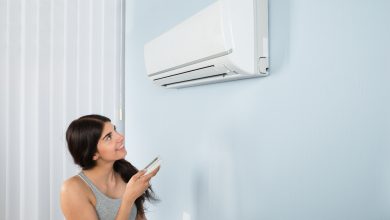Physiotherapy Exercises and their benefits for Stroke Patients

Strokes damage crucial connections between the brain and the muscles, making them the leading cause of long-term disability and, frequently, physical limitations and movement. On the other hand, this loss might not be irreparable. Rehabilitation is essential during the initial phases of healing when patients have minimal control over their injured muscles.
Whatever stage of healing you are in, a consistent physiotherapy Dubai program will be crucial to your long-term success. Find out why Dubai’s physiotherapy is beneficial for stroke victims. Find out what to look for when choosing a facility for stroke-related rehabilitation.
Here are some physiotherapy exercises for stroke sufferers to attempt
Stroke patients can receive physiotherapy in a variety of ways at home. What is the best way to determine which strategies will be most helpful to you? Since each stroke is unique, each survivor will benefit differently from various at-home therapies. Therefore, it’s crucial to take risks and try new things.
After leaving outpatient therapy, stroke patients must continue their recovery at home. For the brain to continue its healing process, it requires regular stimulation.
Here are some suggestions for stroke patients who desire to complete their physiotherapy at home.
-
Regular Exercises for Stroke Rehabilitation
Regular exercise concentrates on building muscle strength, whereas stroke rehabilitation helps your brain communicate with your muscles to cause movement. Rehabilitation focuses on neuroplasticity, the brain’s system for self-healing and acquiring new skills.
Another goal of stroke therapy is strengthening the muscles, which helps stop muscle atrophy by inactivity.
-
Using mirrors to promote hand movement
People with hand paralysis or restricted hand movement may benefit from the method known as mirror therapy, which helps to reactivate the hand-to-brain connection. This stroke rehabilitation technique uses a tabletop mirror to reflect the operable arm over the affected arm. Then, while gazing in the mirror, you engage in tabletop hand rehabilitation activities.
Even if you only move one hand, your brain is tricked into believing that you carry both. It promotes neuroplasticity, which gradually enhances movement in the injured hand.
-
Constraint-Induced Movement Therapy for Arm/Leg Paralysis
Constraint-induced mobility physiotherapy is a challenging type of treatment in Dubai. The use of this medicine may be advantageous for stroke patients. If you have hemiplegia or hemiparesis, it might be helpful. It operates by preventing movement on the unaffected side and forcing the user to use the injured one.
-
Mind-Body Exercises for Paralysis Relief
Mental exercise is highly beneficial for paralyzed patients who cannot move without assistance. It makes it possible for the brain to reconfigure itself without moving.
Try mentally practicing your rehab exercises for five minutes before putting them into practice. According to the research, visualizing yourself moving had the same neuroplasticity-inducing effects as really moving.
-
Home-use Rehab Equipment
Home rehabilitation tools can be helpful if you’re wary of following along with written sheets of exercises while recuperating from a stroke at home. Ask your therapists about any suggested home workout equipment.

-
Every Day Therapeutic Movement
Most physiotherapists have one primary objective when treating stroke patients at home: to keep them active. During the period of rehabilitation following a stroke, any movement is beneficial. Try to perform daily mobility exercises for repair.
Because the frequency with which patients seek long-term therapy is one of the most crucial aspects of a successful recovery. The best results are obtained by making frequent, few measurements.
-
The Japanese word “improvement” is kaizen
The term “kaizen” is used in Japan to refer to the process of creating small, ongoing changes over time. This seems almost too good to be true. The hardest part is keeping things straightforward. Physical therapy after a stroke calls for endurance and patience.
-
Upholding a distraction-free environment
Physical therapy won’t help you if your attention is split between it and something else in the background. To maintain engagement, exercise in a private, peaceful setting. Right now, your brain is reorganizing. Therefore, try to keep distractions from interfering with your work.
-
Continue until a deadlock is reached
Each stroke heals differently since they are all unique. On the other hand, a stroke recovery plateau is a well-documented approach in which progress is frequently slow three months in.
It’s very normal, and you should prepare for it. Despite this, you should still be able to do your physical therapy at home. Recovery will last until you quit, even though it can take longer for the results to manifest.
-
Remedy for the Cause of Spasticity
Stretching can reduce spasticity, but it works best with regular therapeutic activity. Spasticity results from a breakdown in the body’s and brain’s communication. Muscles stiffen up to protect themselves when the brain cannot communicate with them on whether they should move or rest.
I discovered how to avoid contractures by stretching. However, it doesn’t address the underlying cause of spasticity. Rewiring the brain solves the underlying issue. Regular at-home exercise hence reduces spasticity while enhancing mobility.

Benefits of Physiotherapy
When the physiotherapy machine was developed in the 1800s, physiotherapy, and massage therapy were the cornerstones of treatment. These limitations have expanded throughout time, making physiotherapy one of the most popular pain-relieving treatments today. Enhancing your strength, functionality, and mobility can aid in the recovery of your health. Think about how convenient it would be to receive this physiotherapy at home advantages without ever having to leave your home. Physiotherapists work closely with patients one-on-one and deliver care as necessary. Here are a few more benefits of performing physiotherapy at home.
-
The development is quick
The only place that might make you feel better if you’re in pain from an accident, an injury, or any other reason is your home. Your chances of recovering will increase if you receive physiotherapy at home Dubai. You respond quickly because you are at ease and calm.
-
Individual consideration and ties
The presence of your loved ones encourages you when you’re at home. In addition to providing tailored care, physiotherapist machines might also let you express your problems, which would lead to better outcomes. Overall, the efficacy of the treatment increases.
-
Enhanced rehabilitation standards
Even if you might see a physiotherapist, the setting and environment are not helpful for healing. This need might not apply in the case of physiotherapy at home in Dubai because the physiotherapist would first use their skills and equipment to help you. A program would then be created for you depending on the setting and infrastructure of your home, leading to more significant growth.
-
Mobility is not restricted in any way
High-risk individuals are strongly encouraged to receive physiotherapy at home in Dubai. They could find it challenging to travel and get around daily. As a result, individuals receive the best care possible when a physiotherapist visits them at home.
-
Keeping a time log
It can be challenging at times to adhere to the physiotherapist’s regimen. People miss out on expert consultations and treatments due to their hectic schedules. With at-home physical therapy, you can get past this obstacle. You may maintain your routine by planning sessions around your schedule and routine while receiving effective treatments.
Summary:
Our home physio in Dubai enhances the quality of life, strengthening and improving respiratory issues. Our licensed physiotherapists will aid patients at home by emptying fluid from the lungs.
In Dubai, Royal Premiere Healthcare offers doctor-on-call services. In the convenience of your home, we provide a range of medical services, including doctor on call, physiotherapy, and home care nursing.




